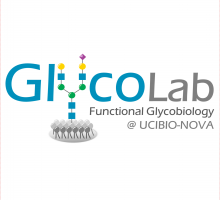{Chemoenzymatic Synthesis of O-Mannose Glycans Containing Sulfated or Nonsulfated HNK-1 Epitope.}
- Citation:
- Gao, Tian, Jingyu Yan, Chang-Cheng Liu, Angelina S. Palma, Zhimou Guo, Min Xiao, Xi Chen, Xinmiao Liang, Wengang Chai, and Hongzhi Cao. "{Chemoenzymatic Synthesis of O-Mannose Glycans Containing Sulfated or Nonsulfated HNK-1 Epitope.}." Journal of the American Chemical Society. 141 (2019): 19351-19359.
Abstract:
The human natural killer-1 (HNK-1) epitope is a unique sulfated trisaccharide sequence presented on O- and N-glycans of various glycoproteins and on glycolipids. It is overexpressed in the nervous system and plays crucial roles in nerve regeneration, synaptic plasticity, and neuronal diseases. However, the investigation of functional roles of HNK-1 in a more complex glycan context at the molecular level remains a big challenge due to lack of access to related structurally well-defined complex glycans. Herein, we describe a highly efficient chemoenzymatic approach for the first collective synthesis of HNK-1-bearing O-mannose glycans with different branching patterns, and for their nonsulfated counterparts. The successful strategy relies on both chemical glycosylation of a trisaccharide lactone donor for the introduction of sulfated HNK-1 branch and substrate promiscuities of bacterial glycosyltransferases that can tolerate sulfated substrates for enzymatic diversification. Glycan microarray analysis with the resulting complex synthetic glycans demonstrated their recognition by two HNK-1-specific antibodies including anti-HNK-1/N-CAM (CD57) and Cat-315, which provided further evidence for the recognition epitopes of these antibodies and the essential roles of the sulfate group for HNK-1 glycan-antibody recognition.
Notes:
n/a
